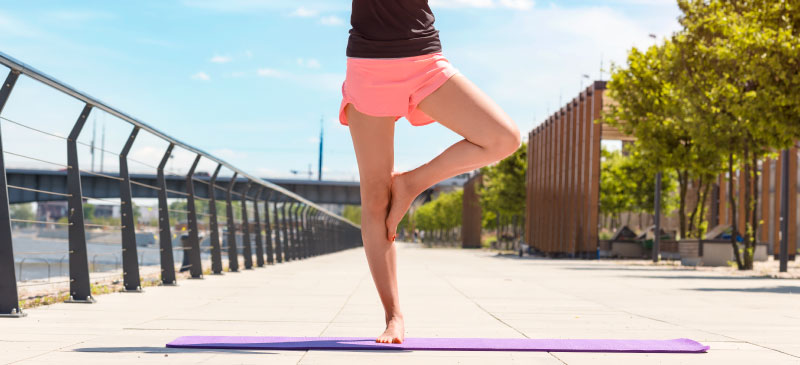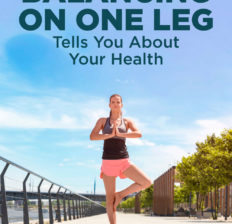This Dr. Axe content is medically reviewed or fact checked to ensure factually accurate information.
With strict editorial sourcing guidelines, we only link to academic research institutions, reputable media sites and, when research is available, medically peer-reviewed studies. Note that the numbers in parentheses (1, 2, etc.) are clickable links to these studies.
The information in our articles is NOT intended to replace a one-on-one relationship with a qualified health care professional and is not intended as medical advice.
This article is based on scientific evidence, written by experts and fact checked by our trained editorial staff. Note that the numbers in parentheses (1, 2, etc.) are clickable links to medically peer-reviewed studies.
Our team includes licensed nutritionists and dietitians, certified health education specialists, as well as certified strength and conditioning specialists, personal trainers and corrective exercise specialists. Our team aims to be not only thorough with its research, but also objective and unbiased.
The information in our articles is NOT intended to replace a one-on-one relationship with a qualified health care professional and is not intended as medical advice.
Balancing on One Leg for 10 Seconds Tied to Better Health
July 11, 2022

Have you ever heard that balancing on one leg is linked to overall health and even a longer life span? It’s true — studies show that being able to support your body weight on one leg for at least 10 seconds predicts that someone will live longer.
Why is it good to balance on one leg? Having good balance indicates that someone has a certain level of muscle strength, stability and coordination. It also protects against slips and falls, which are common causes of disabilities among older adults.
Study Findings: 10-Second, One-Legged Stand and Health
A 2022 study published in the British Journal of Sports Medicine found that being able to successfully balance on one leg for 10 seconds predicted survival into older age among middle-aged and older individuals.
The study included 1,702 individuals (68% men) between the ages of 51–75 years. After completing the 10-second balance test, researchers followed up with the participants about seven years later to track how they were doing.
What did the findings show?
About 20% of the individuals failed at balancing on one leg for 10 seconds or more. (Each person was given three tries, including on both legs.) The older someone got, the less likely that person was to pass the test.
Here’s more from the study:
- 17.8% of people between 61–65 years could not balance on one leg.
- 36.8% of people between 66–70 years failed the test.
- More than 53% of those between 71–75 years could not complete the test.
- During the follow-up times, 123 participants (7.2%) died, mostly due to cancer (32%), cardiovascular causes (30%), diseases of the respiratory system (9%) and COVID-19 complications (7%). Survival during the follow-up period was found to be worse for people who could not complete the 10-second balance test.
Overall, after adjusting for age, sex, body mass index and comorbidities, all-cause mortality was higher among adults who struggled with balance in middle age.
The study concluded: “Our data show that middle-aged and older participants unable to complete the 10-s OLS had lower survival over a median of 7 years compared with those able to complete the test, with an 84% higher risk of all-cause mortality, even when other potentially confounding variables.”
What Balancing on One Leg Means
We know that balance (plus strength, flexibility and other signs physical health) tends to diminish among adults who are 50+, so preserving balance can indicate that someone is physically capable overall.
Greater balance also reduces the risk for falls and other adverse health outcomes among older adults.
What does it mean when you can’t balance on one leg?
You’re thought to be at greater risk of falling, injuring yourself and having other health complications if you can’t balance well as a middle-age or older-age adult.
It’s believed that there’s also an association between sarcopenia (muscle wasting), obesity, loss of flexibility and poor balance. All of these are detrimental for overall health, especially the elderly, who are prone to frailty and injuries.
In fact, accidents involving falls are one of the leading causes of disabilities among older adults. According to the study mentioned above, “Each year an estimated 684000 individuals die from falls globally.”
Additional health problems that are more common among people with poor balance include:
- neurological diseases
- cognitive issues
- orthopedic issues (especially those affecting the back and spine)
- poor vision
In the group of participants who couldn’t balance compared to those who could, more people were found to be overweight/obese and to have heart disease, high blood pressure and/or diabetes.
Which muscles does balancing on one leg strengthen?
Balancing might seem simple, but it’s actually pretty complicated. You need to have core, back, pelvic and leg strength — as well as coordination— to balance successfully.
Stability and strength in your your glutes (butt muscles) and pelvis are especially important for balancing on one leg, and these are the same muscles that keep you from falling accidentally, too.
Can you learn to balance on one leg?
Yes, most people can improve their balance at any age by engaging in regular exercise. Balancing exercises, such as yoga, are some of the best ways to do this.
Building pelvic and glute/butt strength also helps, such as by doing:
- all types of lunges
- hip digs
- squats
- clam shells
- kick backs
- walking uphill
- jogging
- cycling
Most sports can also help promote better balance, such as pickleball, tennis, volleyball and even golf.
Other Ways to Promote Longevity
Aside from balancing on one leg, here are other lifestyle habits that are linked to a long, healthy life:
- Stay active, and avoid a sedentary lifestyle. Aim for at least 30 minutes of exercise most days of the week.
- Eat an anti-inflammatory diet, which can help protect heart and cognitive health, both of which are essential for overall well-being.
- Maintain a healthy weight and BMI, which is linked to higher likelihood of living into older age. If you’re struggling to reach a healthy weight, consider trying intermittent fasting, the Mediterranean diet or a “clean” keto diet that can promote fat loss.
- Get enough sleep, and manage stress, which support your nervous system. Nervous system dysfunction is believed to be tied to poor balance, impaired physical health and higher risk for early death.
Conclusion
- A 2022 study found that balancing on one leg predicts living a healthier life into older age.
- Middle-aged and older-age adults who could balance for at least 10 seconds on one leg were found to have a lower risk for all-cause mortality in the following decade. Those who couldn’t balance had a 84% higher risk of death during the seven-year follow-up period.
- Why is balancing important? It’s a sign that someone has muscle strength, coordination and other physical abilities that tend to diminish with older age. To maintain your ability to balance, exercise regularly, eat a healthy diet and stay at a normal weight.












